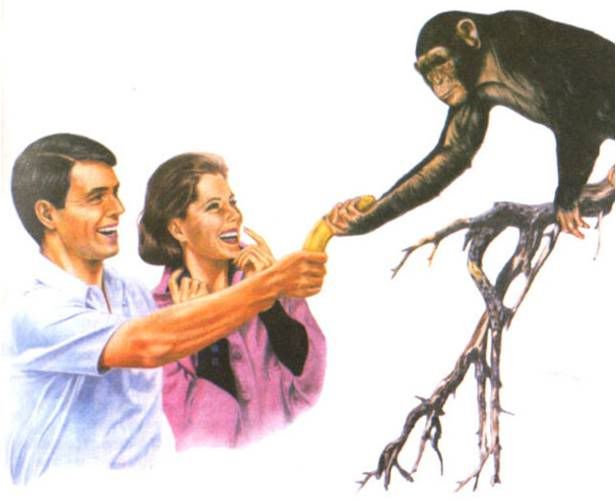
The discovery in the early 90s of mirror neurons in macaques, neurons that fired both when the monkeys were performing a specific goal-directed hand action and when they viewed another monkey performing the same action, spurred a great deal of research and theorizing in the psychology and neuroscience communities. Unfortunately, many of the theories derived from the discovery of mirror neurons stepped away from the original empirical findings of Di Pellegrino et al. (1992), presuming at the outset (sans evidence) that mirror neurons in humans have evolved dramatically from those found in monkeys. That said, theorists have suggested (among other things) that mirror neurons are the source of human empathy, the evolutionary precursor to language (via action understanding), and that a mirror neuron deficiency is the cause of autism. These theories are all well and good...except that they all assume mirror neurons have behavioral consequences beyond those seen in monkeys, and they assume that humans have large circuits of mirror neurons (which have never been found in the human brain). Hickok (2009) provides one of the most well-constructed critiques of the limitations and exaggerations inherent to theories of action understanding through mirror neuron activity.
Germane to my field of study is the proposition that mirror neurons form the foundation for language (and serve an important role in the understanding of speech, providing the neural basis for the motor theory of speech perception, previously discussed here). It has been suggested that the earliest forms of communication were likely to be gestural (Arbib, 2002; Corballis, 2003; Fogassi & Ferrari, 2007). Arbib (2002) outlined seven theoretical stages in the evolution of linguistic capabilities. The first four stages involve adaptations in the ability to grasp objects with the hand and understand the grasping behaviors of other animals. Each of these evolutionary steps entails a further development of the Broca’s area homolog, including the development of mirror systems, yielding the ability to interpret the actions of others through simulation. As Arbib explained, “The evolution of mirror neurons extended ‘knowing’ from the individual to the social,” (pp. 14). Further imitative abilities allowed for a rudimentary manual communication system. As Corballis (2003) pointed out, modern wild chimpanzees exhibit a variety of manual gestures. He posited that they are one evolutionary component away from the ability to communicate effectively through mime: bipedalism. Indeed, it is likely that the earliest bipedal hominids communicated through pantomime, and this communication was accompanied by facial expressions and simple vocalizations that provided emotional valance (Fogassi & Ferrari, 2007).
A paper in press at Brain & Language (which I've made available here) examines one of the core premises of the Arbib theory of language evolution. If mirror neurons are at the heart of communication (allowing language recognition through simulation), and if language evolved from gesture, then a language that is overtly gestural, such as sign language, should be largely reliant on mirror neurons and mirror networks in the brain. Knapp and Corina (in press) evaluated three predictions derived from the mirror neuron theory of language, primarily through an examination of research in sign language:
- "Damage to the human mirror neuron system should non-selectively disrupt both sign language and non-linguistic action processing."
- "Within the domain of sign language, a given mirror neuron locus should mediate both perception and production."
- "The action-based tuning curves of individual mirror neurons should support the highly circumscribed set of motions that form the ‘‘vocabulary of action” for signed languages."
As I see it, this paper is something of a nail-in-the-coffin for the mirror neuron theory of language understanding. A language that should be most in-touch with the theoretical origin of spoken language, sign language, does not appear to be moderated by mirror neurons or mirror networks in the brain. Do we need to continue this fiasco?
References:
Arbib, M. (2002). The mirror system, imitation, and the evolution of language. In C. Nhaniv & K. Dautenhahn (Eds.), Imitation in Animals and Artifacts. The MIT Press.
Corballis, M. C. (2003). From mouth to hand: Gesture, speech, and the evolution of right-handedness. Behavioral and Brain Sciences, 26, 199-260.
Di Pellegrino, G., Fadiga, L., Fogassi, L., Gallese, V., & Rizzolatti, G. (1992). Understanding motor events: A neurophysiological study. Experimental Brain Research, 91, 176-180.
Fogassi, L. & Ferrari, P. F. (2007). Mirror neurons and the evolution of embodied language. Current Directions in Psychological Science, 16, 136-141.
Hickok, G. (2009). Eight problems for the mirror neuron theory of action understanding in monkeys and humans. Journal of Cognitive Neuroscience, 21, 1229-1243. (link)
Knapp, H. P. & Corina, D. P. (in press). A human mirror neuron system for language: Perspectives from signed languages of the deaf. Brain & Language. (link)







0 comments:
Post a Comment